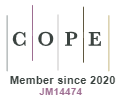The Lean Office methodology applied in project management
DOI:
https://doi.org/10.5585/gep.v14i2.23494Keywords:
Lean Office, Project management, Management, Industry, Value stream mapping.Abstract
This technical report describes the implementation of the Lean Office methodology as a process optimization strategy in project management of the Industriallie System. The Lean Office methodology uses the already recognized precepts of Lean Manufacturing applied in an administrative environment with specific characteristics. Widely spread in manufacturing processes, it becomes a challenge to optimize processes and reduce waste in administrative areas, where the tangibility of these tasks is even more complex. The methodology was applied in one of the management's strategic programs, with extensive operations in the state and high complexity of information flow. The work included tools such as the Pareto Principle and Value Stream Mapping for prioritization and decision making regarding the adjustments to be made, with senior management, definition of the implementation team, definition of activities that add and do not add value, study of Lean concepts and tools, construction of the map as a visual representation using a set of icons, leadership of metrics, development of continuous improvement, understanding of demands, creation of action plans and implementation of improvements. The results achieved promoted the reduction of bureaucracy and the exclusion of low value-added activities, leading to customers and greater agility in their performance.
References
Coughlan, P. D. (2002). Action research for operations management. Action research for operations management, 22(2), 220–240. https://doi.org/10.1108/01443570210417515
Imai, M. (26 de outubro de 2016). Prof. Imai e o Kaizen-Lean: Baixando os custos e melhorando a qualidade. https://br.kaizen.com/blog/post/2016/10/21/prof-imai-e-o-kaizen-lean-baixando-os-custos-e-melhorando-a-qualidade.
Kiremire, Ankunda (2011). The application of the pareto principle in software. https://docplayer.net/8768865-The-application-of-the-pareto-principle-in-software-engineering.html.
Lean Institute Brasil, (2011). https://lean.org.br/.
Mcmanus, H. (2003). Product development value stream analysis and mapping manual (PDVMS) - Alpha Draft. Cambridge: Massachusetts Institute of Technology.
Melton, T. (2005). The Benefits of Lean Manufacturing: What Lean Thinking has to Offer the Process Industries. Chemical Engineering Research and Design, 83(6), 662–673.
Mizumoto, T. (2012). Lean Office: como eliminar desperdícios e criar processos mais eficientes. Rio de Janeiro: Elsevier.
Ohno, T. (1997). O Sistema Toyota de Produção: além da produção em larga escala. Porto Alegre: Bookman.
Pmbok Guide Project Management Institute. 5 ed. Pensilvânia: Project Management Institute, Inc., 2013.
Rother, M.& Shook, J. (2003). Aprendendo a enxergar: mapeando o fluxo de valor para agregar valor e eliminar o desperdício. São Paulo: Lean Institute Brasil.
Shingō, Shigeo, (1989). A study of the Toyota production system from an industrial engineering viewpoint. Cambridge, Mass. :Productivity Press
Shingō, Shigeo, (1996). O Sistema Toyota de Produção do ponto de vista da Engenharia de Produção. 2. ed. Porto Alegre: Bookman.
Smalley, A. (2004). Creating level pull: A lean production system improvement guide. Brookline, Mass.: Lean Enterprises Institute.
Tapping, D. & Shuker, T. (2010). Lean Office: Gerenciamento do Fluxo de Valor para Áreas Administrativas - 8 passos para planejar, mapear e sustentar melhorias Lean nas áreas administrativas. São Paulo: Leopardo Editora.
Turrioni, J.B. (2009). Pesquisa-ação na Engenharia de Produção. In: Miguel, P.A.C.(Org.). Metodologia de Pesquisa em Engenharia de Produção e Gestão de Operações (p. 149–164). São Paulo: Campus.
Umeda, M. (1997). As sete chaves para o sucesso do 5S. Belo Horizonte: Fundação Christiano Ottoni, Escola de Engenharia da UFMG.
Womack, J. P. & Jones, D. T. & Roos, D. (1990). The machine that changed the world. Londres: Simon and Schuster.
Downloads
Published
How to Cite
Issue
Section
License
Copyright (c) 2023 Dos autores

This work is licensed under a Creative Commons Attribution-NonCommercial-ShareAlike 4.0 International License.
- Abstract 667
- PDF (Português (Brasil)) 607






